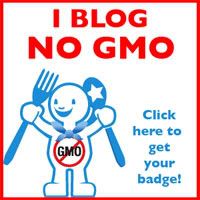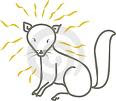 The Miatake mushroom (Grifola frondosa) grows in clusters at the base of trees, particularly oaks. The mushroom is commonly known among English speakers as Sheep’s Head, Ram’s Head and Hen of the Woods.
The Miatake mushroom (Grifola frondosa) grows in clusters at the base of trees, particularly oaks. The mushroom is commonly known among English speakers as Sheep’s Head, Ram’s Head and Hen of the Woods.This mushroom is native to the northeastern part of Japan and North America. It is prized in traditional Chinese and Japanese as a medicinal mushroom and as an aid to balance out an altered body system. The word Maitake is literally translated from Japanese as "dancing mushroom," so named because in ancient times people who found Maitake could exchange it for its weight in silver, leading to their dancing in celebration. In Japan, the Maitake can grow to more than 50 pounds and has earned this giant mushroom the title, "King of Mushrooms".
All mushrooms have a cleansing property. They are rich in a substance known as, Germanium. This important nutrient that actually helps increase oxygen efficiency in the body. It also helps balance the exposure to environmental pollutants and build resistance to various diseases. Germanium can also help the body neutralize toxic residues.
Patients with the AIDS virus have benefited from eating maitake mushrooms and diabetics can improve their blood sugar levels by ingesting maitake mushrooms. Additionally, maitake mushrooms can help reduce high blood pressure, shrink brain tumors, and fight prostate cancer.
Maitake mushrooms can also help to manage emotional and physical stress levels. Cancer patients can benefit from eating maitake mushrooms because they contain a compound that strengthens the body while it fights cancer. Additionally, it is thought that maitake mushrooms can make some chemotherapy drugs more effective and thereby may reduce necessary dosages.
Other diseases that may benefit from the use of Miatake Mushrooms are;
* Reduces the recurrence of bladder surgery
* Protects the liver and has been shown to aid with chronic hepatitis B
* Provides nutritional support by enhancing the colons ability to absorb nutrients
* Lowers blood pressure
* Lowers cholesterol
* Manages emotional and physical stress levels
* Reduces Inflammation
* Prevention or reduction of blood clots
How much should you take?
The standard dosage is 3 to 7 grams of Maitake per day; however, strengths of different forms will vary. It is important to read and follow product label directions for use.
Maitake Mushroom Safety & Interaction Information
There are no known side effects or interactions associated with Maitake.
Click to read part one on; Reishi Mushroom
Maitake Tea (other recipes)
Use 2-4 grams daily prepared as a tea. The daily amount, taken as tea, should be split between morning and evening.
The dried mushroom can easily be ground to a powder in a coffee grinder.
Bring the tea to a boil, and then reduce to a simmer. For maximum benefit you can simmer the tea from 2-4 hours, although a fairly strong tea can be made in 20-30 minutes. The grounds can be re-heated with benefit, discard the grounds when they no longer produce color in the tea.
Filter the tea through a coffee filter before drinking. As mentioned the grounds can be re-used as long as they produce color in the tea. Any un-used portion of the Maitake tea can be refrigerated and used up to two days later. Shake the stored tea before using it.
Sources:http://www.healthynewage.com/Shitak...
MountainRoseHerbs.com
HealthCastle.com
NaturalNes.com























